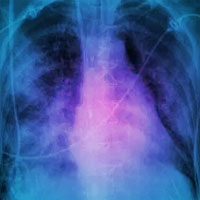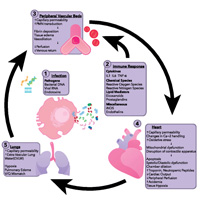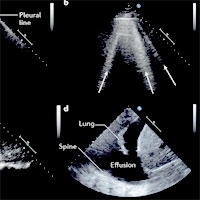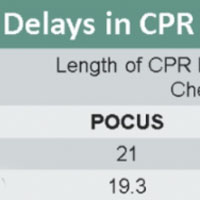Tag: echocardiography

TPTD Techniques in the Hemodynamically Unstable Patient
Transpulmonary thermodilution (TPTD) devices invasively measure not only cardiac output but also several other hemodynamic variables estimating cardiac preload, cardiac preload, systolic function, the lung oedema and systolic... read more

Textbook of Critical Care
Comprehensive, concise, and readable, Textbook of Critical Care, 7th Edition, brings you fully up to date with the effective management of critically ill patients, providing the evidence-based guidance you need to overcome... read more
What is the lowest change in cardiac output that transthoracic echocardiography can detect?
In critically ill patients, changes in the velocity-time integral (VTI) of the left ventricular outflow tract, measured by transthoracic echocardiography (TTE), are often used to non-invasively assess the response to fluid... read more

Feasibility, Safety, and Utility of Advanced Critical Care Transesophageal Echocardiography Performed by Pulmonary/Critical Care Fellows in a Medical ICU
Critical care transesophageal echocardiography is feasible, safe, and has clinical utility. It can be safely and effectively performed by fellows within the context of their critical care training with faculty supervision.... read more

Pathophysiology, echocardiographic evaluation, biomarker findings, and prognostic implications of septic cardiomyopathy
As a result of conflicting data, echocardiographic measures of left ventricular (systolic or diastolic) or right ventricular function cannot currently provide reliable prognostic information in patients with sepsis. Natriuretic... read more

Left ventricular systolic function evaluated by strain echocardiography and relationship with mortality in patients with severe sepsis or septic shock
Worse global longitudinal strain (GLS) (less negative) values are associated with higher mortality in patients with severe sepsis or septic shock, while such association is not valid for left ventricular ejection fraction... read more

Echocardiography and Lung Ultrasonography for the Assessment and Management of AHF
Echocardiography is increasingly recommended for the diagnosis and assessment of patients with severe cardiac disease, including acute heart failure (AHF). Echocardiography and LUS can assist in the rapid assessment of patients... read more

Cardiopulmonary Monitoring of Shock
Shock has potentially reversible causes of morbidity and mortality if appropriately diagnosed and managed. Older methods of invasive monitoring have significant limitations but are still critical for managing shock in certain... read more

Preventing Harmful Delays with POCUS During Cardiac Arrest
With the integration of bedside echocardiography into cardiac arrest, we now have a real-time tool to help us glean some of this critical missing information, as well as offer procedural guidance and prognostic data. However,... read more

Percutaneous Repair or Medical Treatment for Secondary Mitral Regurgitation
Among patients with severe secondary mitral regurgitation, the rate of death or unplanned hospitalization for heart failure at 1 year did not differ significantly between patients who underwent percutaneous mitral-valve repair... read more
When Does an Effusion Become Pericardial Tamponade?
Pericardial tamponade occurs when fluid within the pericardial sac impairs filling of the right-sided chambers, leading to a decrease in cardiac output and hemodynamic compromise. It is neither a clinical nor an echocardiographic... read more

The use of echocardiographic indices in defining and assessing right ventricular systolic function in critical care research
TAPSE seemed to be the most popular index in the last 2–3 years. Many studies used combinations of indices but, apart from cor pulmonale, we could not find a consistent pattern of RV assessment and definition of RV dysfunction... read more

Diagnostic Workup, Etiologies and Management of Acute Right Ventricular Failure
Right Ventricular (RV) function evaluation is key in the critically-ill patients for hemodynamic management, as fluid optimization, vasopressor strategy and respiratory support. RV failure may be diagnosed by the association... read more

Practicing Respect in the ICU
In this episode, we discuss the practice of respect in the ICU. Our guest is Samuel M. Brown, MD, MS, a practicing intensivist and Director of the Center for Humanizing Critical Care at Intermountain Medical Center in Murray,... read more








